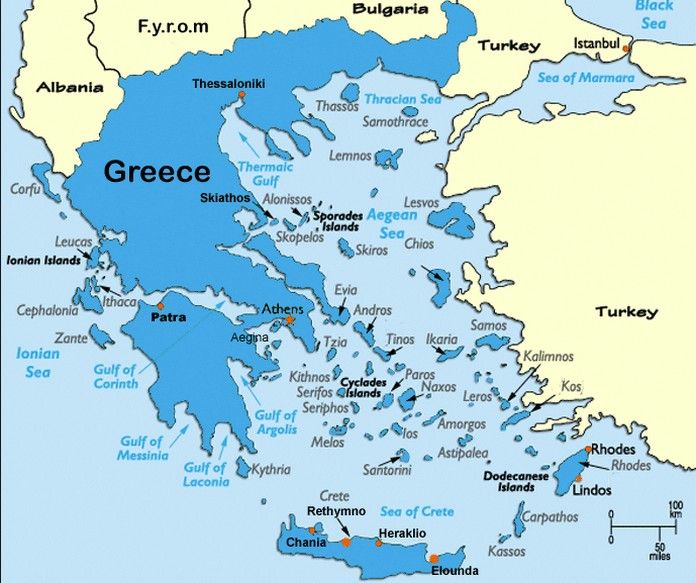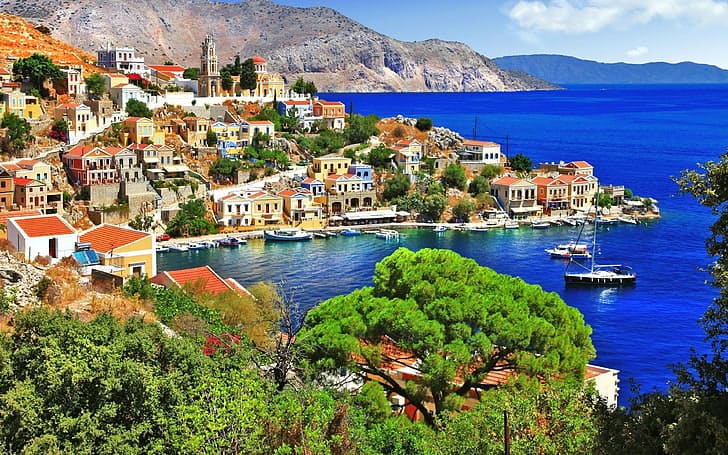The Dodecanese group of islands, lying in the vastness of the Southern Aegean between Crete and Turkey comprises about 200 islands and islets of which only 15 are inhabited. It forms the prefecture of the Dodecanese with its capital at Rhodes. The highest peaks are mount Apavyros on Rhodes and Kalolimni on Karpathos.
The islands have a Mediterranean climate with comparatively fresh summers and mild winters. The Dodecanese islands were first inhabited during the 4th Millenium BC by Telchines and Karians. Later the Minoinas founded trading posts on Rhodes and during the Mycenaean period (after 1400 BC), Acheans came here from the Peloponnese.

The islands were also colonized by Dorians and Ionians. The elaborate Rhodian vases found in various excavations attest to the flowering of Rhodian trade in historical times. The Rhodians and the Koans took part in the colonization of Asia Minor and Sicily.
During the Persian Wars, the Dodecanese fell to the Persians but were liberated by the Athenian fleet and became part of the Athenian Confederacy from which they seceded before the end of the Peloponnesian war.
At the end of the 5th century, Rhodes became a major naval power and in the 4th century Kos also flourished, thanks to the medical school of Hippokrates.

In Hellenistic and Roman times both islands were important artistic and cultural centers.
During the Byzantine period, the Dodecanese islands were part of the Eastern empire and were attacked by Persians, Arabs, Venetians, Genoese, and the Crusaders. In 1309 they were captured by the Knights of the Order of Saint John of Jerusalem and finally fell to the Turks in 1522.
During the Greek War of Independence in 1921, the people of the islands fought alongside the other Greeks. The islands were not liberated, however, but ceded to the Turks in exchange for the annexing of Evia to Greece.
In 1912, Italy occupied the Dodecanese and the islands were only liberated in 1948 by a special treaty when they were incorporated into the Greek state.